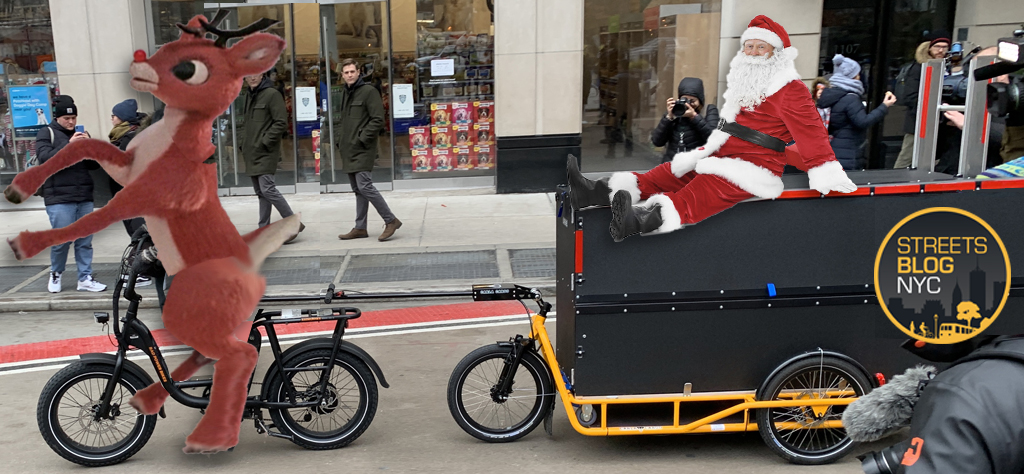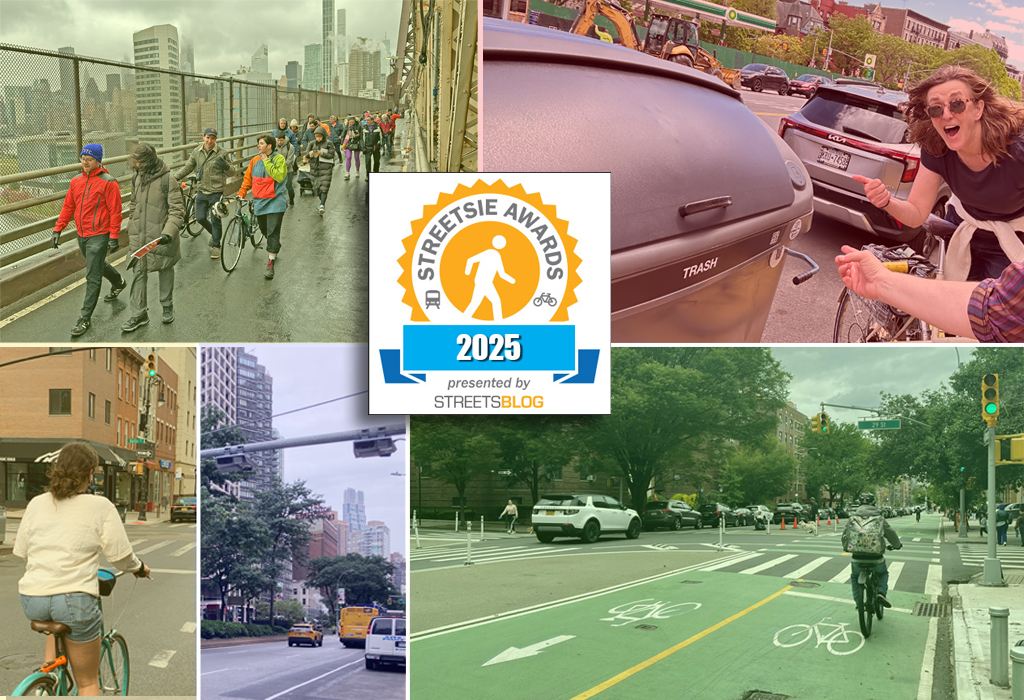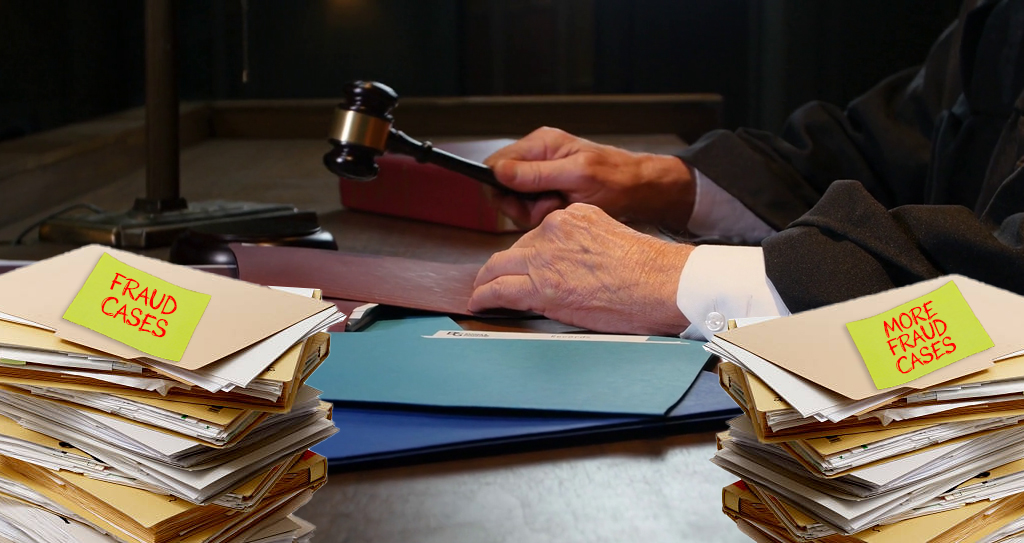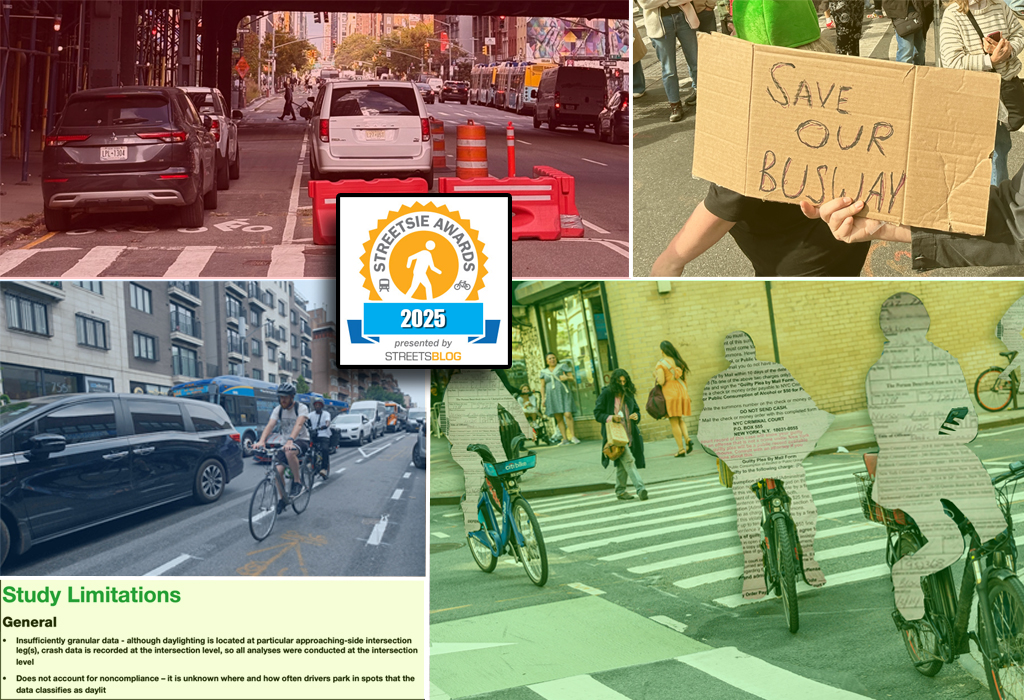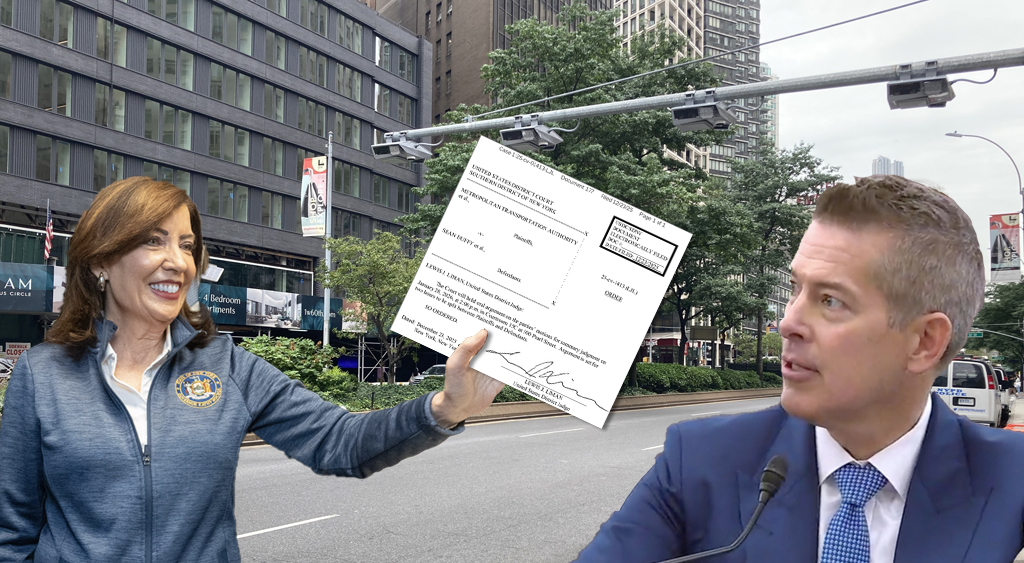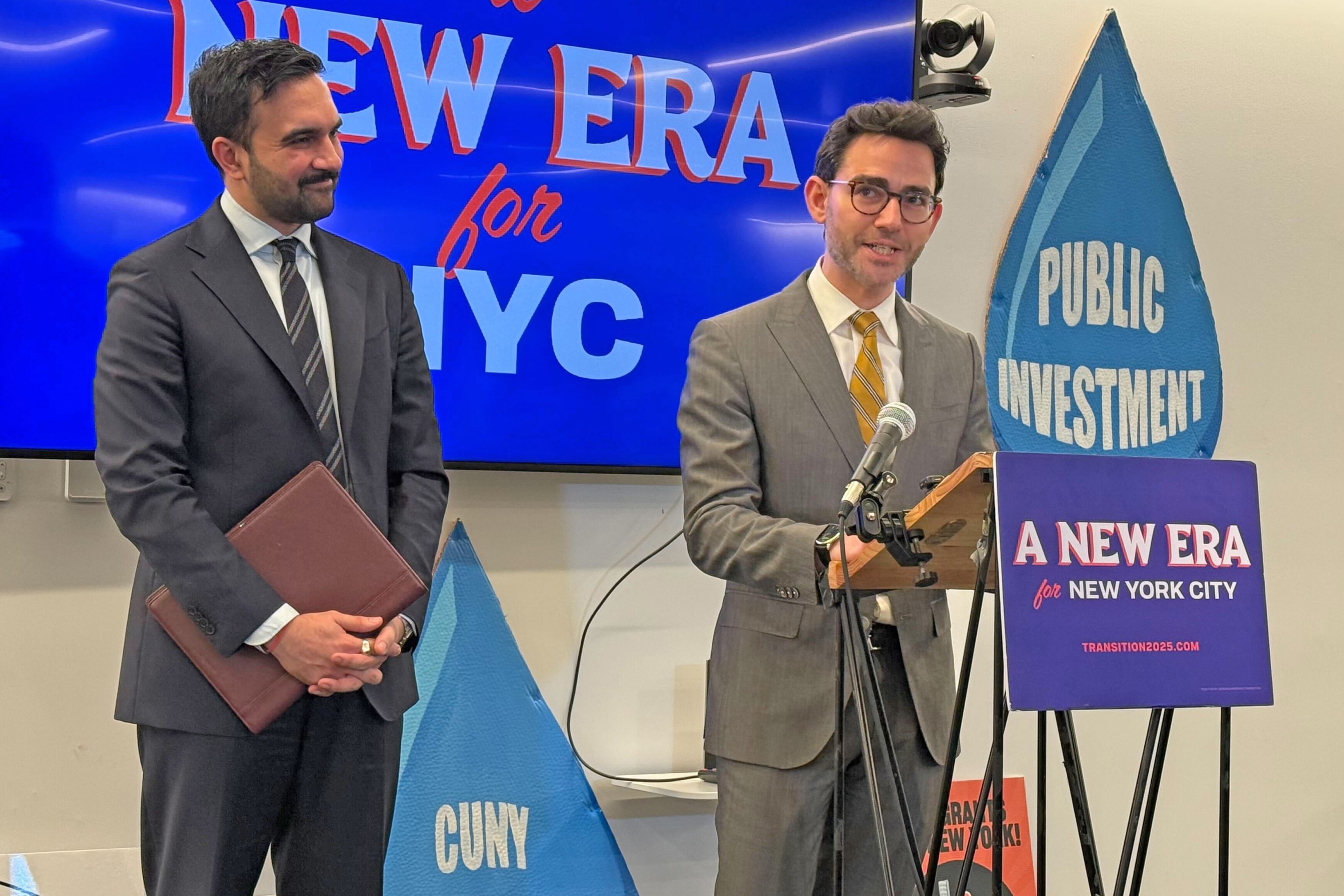To park-tect and serve.
"Emergency vehicles" belonging to cops, firefighters, EMS and other law enforcement agencies are mucking up bus service on Brooklyn's Jay Street busway, racking up an average of six violations per day for illegal parking in bus stops, MTA data shows.
Installed in 2021, the Jay Street busway is among the lowest-performing of the city's bus-only streets — and one explanation is the preponderance of illegal parking by cops.
Between June 20, 2024 and Aug. 20, 2025, the MTA's Automatic Camera Enforcement system has nailed 2,559 "emergency vehicles" parked in bus stops on the bus-priority stretch of Jay Street — an average of six per day.
The data comes from a recent MTA compilation of the tickets spit out by the bus-mounted camera enforcement system that was authorized by the state legislature in the 2023 budget.
The cameras went live in June 2024. From the outset, they amassed evidence that NYPD and other emergency services routinely block bus stops on Jay Street, slowing down service and making it harder for riders to board.
DOT warned this might happen when it proposed the busway back in 2020. Agency officials were upfront at the time about the fact that the block was a hotspot for drivers who illegally park using government-issued parking permits, and that their presence might hinder the busway's chances of success.
At least police and court officers who use placards can get tickets on their personal vehicles, though. Official emergency vehicles are exempt: The only thing stopping the driver of one from blocking a bus stop is his conscience — hence the row of SUVs parked at the bus stop at Jay Street and Willoughby Street in August:
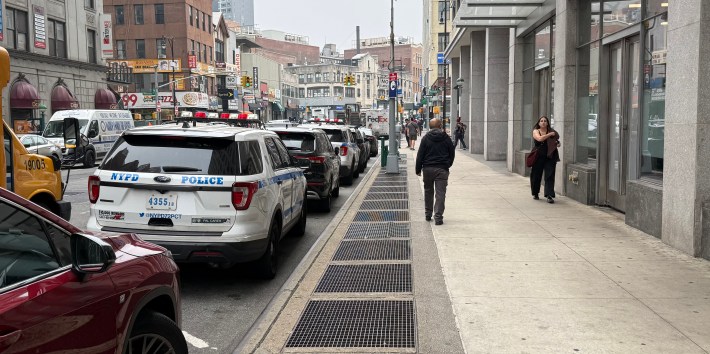
The "emergency vehicles" exemption is also the most common reason a ticket isn't actually sent when a violation is recorded by a bus camera, including factors like covered or missing license plates or commercial vehicles that are stopped for under 20 minutes. Adding up the five other categories of violation exemptions still only results in 2,067 exemptions total, or 492 fewer than the total number of emergency vehicle exemptions.
Jay Street is near a number of courthouses and Brooklyn Borough Hall, which makes it a magnet for police cars, but also for court officers' and NYPD officers' personal cars. The continuing issues of placard abuse and illegal parking along the busway are a symptom of City Hall leadership as well as design flaws, according to advocates for bus riders.
"This is an administration swimming in much bigger corruption, so it's no surprise that small-scale corruption like placard abuse is flourishing here," said Riders Alliance Director of Policy and Communication Danny Pearlstein.
But Pearlstein also said that the city should take a look at Jay Street's design to determine if there's a better way to deter or disallow parking by private vehicles, and if there's a better way for official vehicles to park on Jay Street.
"Jay Street should be re-evaluated, and more broadly the city needs a place to store its fleet. But that also raises questions about private vehicles parking in the area. If exempt vehicles are blocking the public way, that suggests private vehicles are taking up too much space on Jay Street and there's no other places for official vehicles to be," he said.
The MTA declined to comment on the issue. A spokesperson for the mayor said City Hall would remind officers to stop getting in the way of the bus.
"All vehicles must follow the rules of the road to maintain the safety, reliability, and efficiency of our transit system and city streets," said City Hall spokesperson Sophia Askari. "When responding to an emergency, our emergency service providers must be able to move quickly down our streets to provide life-saving assistance, but we urge our officers to avoid unnecessarily disrupting the flow of traffic. We will review the MTA’s data to help make sure these standards are upheld."
The city needs to find some kind of long term solution though, because Jay Street has been one of the less-successful busways the city has installed.
"We shouldn't have a Potemkin busway," said Pearlstein, referring to a practice by the 18th-century Russian governor Grigory Potemkin of installing deceptive facades on unsightly buildings to conceal his region's squalor. "We should have one that delivers fast and reliable bus service."

